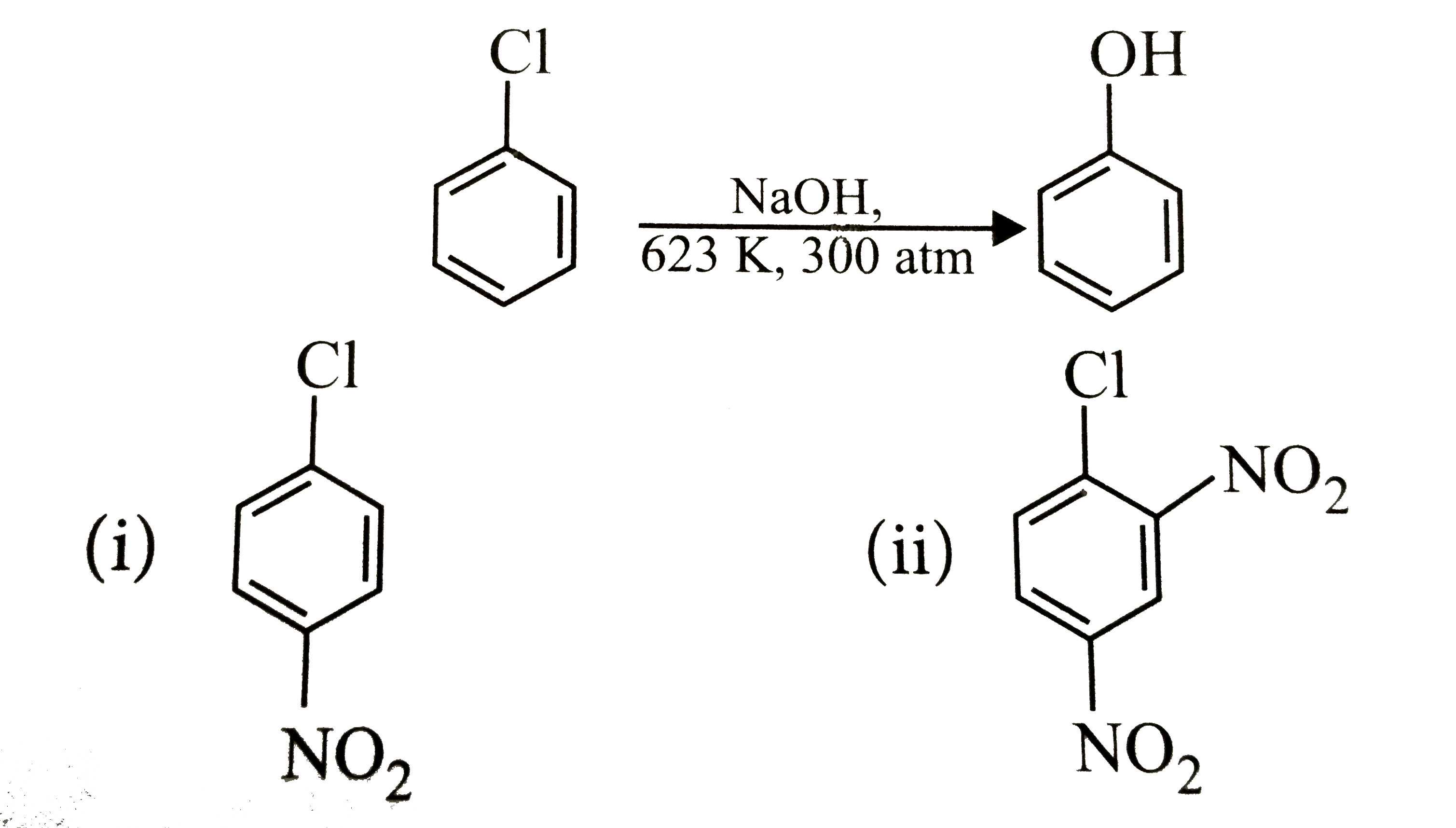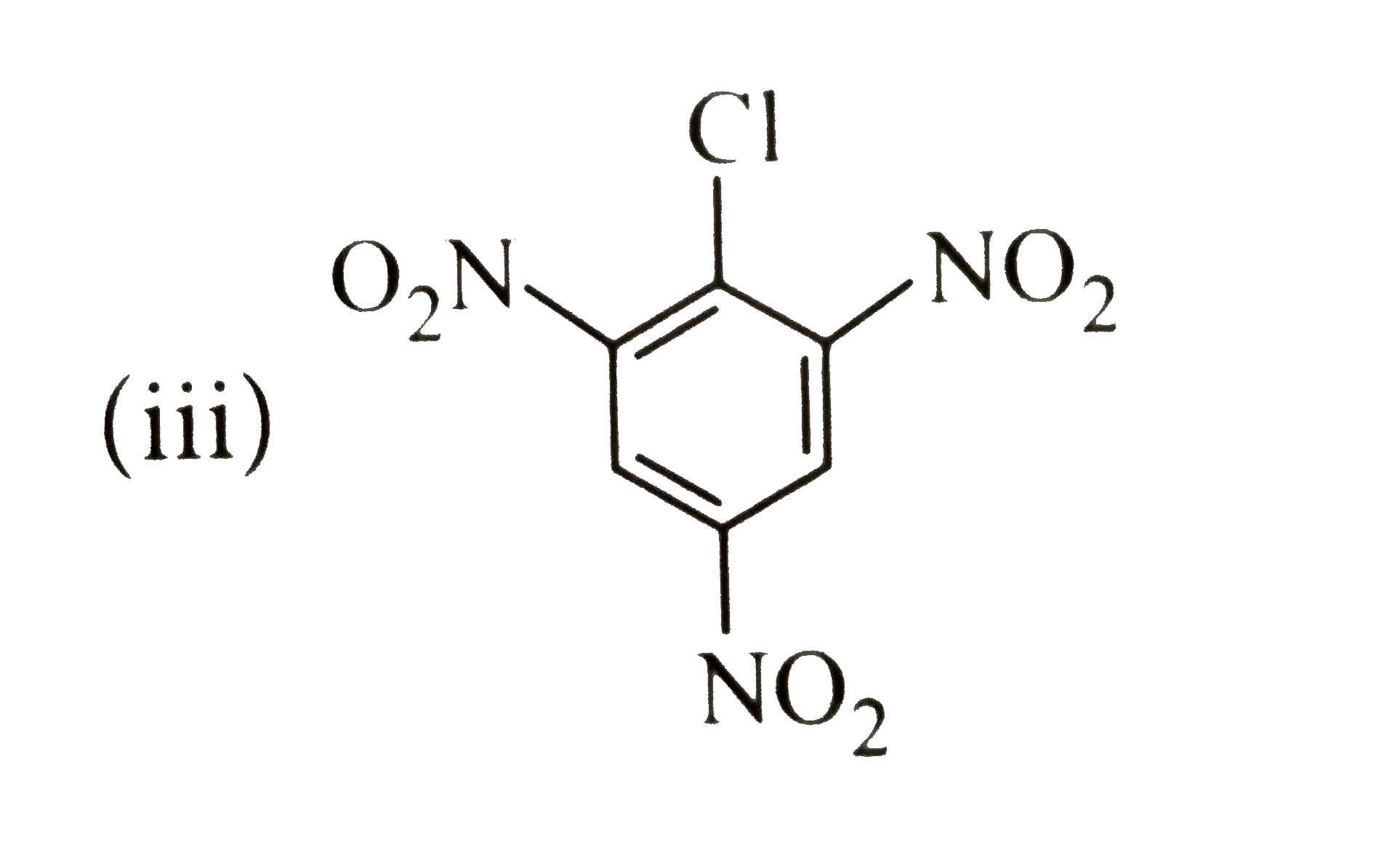Cholorobenzene is fused with aqueous sodium hydroxide at 623K and 300 atm followed by hydrolysis with dil. HCI.
What is the name of the above reaction?
Williamson's synthesis
Dow's process
Rosenmund's reduction
Kolbe's reaction
To solve the question regarding the reaction of chlorobenzene with aqueous sodium hydroxide followed by hydrolysis, we can break it down into the following steps:
Step 1: Identify the Reactants and Conditions
We start with chlorobenzene (C6H5Cl) and treat it with aqueous sodium hydroxide (NaOH) under specific conditions of temperature (623 K) and pressure (300 atm).
Step 2: Understand the Reaction Mechanism
Under these conditions, chlorobenzene undergoes a nucleophilic substitution reaction. The sodium hydroxide provides hydroxide ions (OH⁻) that attack the carbon atom bonded to the chlorine in chlorobenzene, leading to the formation of a phenoxide ion (C6H5O⁻).
Step 3: Hydrolysis
After the formation of the phenoxide ion, the next step involves hydrolysis. This is done by treating the phenoxide ion with dilute hydrochloric acid (HCl). During this hydrolysis, the phenoxide ion is converted to phenol (C6H5OH).
Step 4: Name the Reaction
The overall transformation of chlorobenzene to phenol through the described process is known as the Dawson's Process. This name is attributed to the specific conditions and the type of reaction involved.
Final Answer
The name of the above reaction is Dawson's Process.
---
We start with chlorobenzene (C6H5Cl) and treat it with aqueous sodium hydroxide (NaOH) under specific conditions of temperature (623 K) and pressure (300 atm).
Under these conditions, chlorobenzene undergoes a nucleophilic substitution reaction. The sodium hydroxide provides hydroxide ions (OH⁻) that attack the carbon atom bonded to the chlorine in chlorobenzene, leading to the formation of a phenoxide ion (C6H5O⁻).
After the formation of the phenoxide ion, the next step involves hydrolysis. This is done by treating the phenoxide ion with dilute hydrochloric acid (HCl). During this hydrolysis, the phenoxide ion is converted to phenol (C6H5OH).
The overall transformation of chlorobenzene to phenol through the described process is known as the Dawson's Process. This name is attributed to the specific conditions and the type of reaction involved.
The name of the above reaction is Dawson's Process.
Topper's Solved these Questions
- QUESTION PAPER 2022 TERM 1Book:ICSEChapter:QUESTION PAPER 2022 TERM 1Exercise:question
Explore 1 Video
- PROLEMS BASED ON CHEMICAL STRUCTURES AND REACTIONS Book:ICSEChapter:PROLEMS BASED ON CHEMICAL STRUCTURES AND REACTIONS Exercise:QUESTIONS
Explore 185 Videos
- SAMPLE PAPER 3 (CHEMISTRY) Book:ICSEChapter:SAMPLE PAPER 3 (CHEMISTRY) Exercise:QUESTIONS
Explore 70 Videos
Similar Questions
Knowledge Check
Reactions of C6H5CH2Br with aqueous sodium hydroxide follows……..
ASN1 mechanismBSN2 mechanismCAny of the above two depending upon the temperature of reactionDSaytzeff ruleReaction of C6H5CH2Br with aqueous sodium hydroxide follows........
ASN1 mechanismBSN2 mechanismCAny of the above two depending upon the temperature of reactionDSaytzeff rule
Chlorobenzene can be converted into phenol by heating in aqueous sodium hydroxide solution at temperature of 623K and a pressure of 300atm. However the rate of reaction can be increased by presence of certain groups in benzene ring. What will be the order of reactivity of following compounds towards the above substitution reaction?


View SolutionIn the industrial preparation of ammonia by Haber process from nitrogen and hydrogen, the reaction is carried in the temperature range of 450∘C to 500∘C and in a pressure range of 200 atm to 300 atm. Now answer the following question.
What is the name of the catalyst used in the reaction?
View SolutionAs ester has molecular formula C4H8O2. Write its structural formula. What happens when this ester is heated in the presence of aqueous sodium hydroxide solution? Write the chemical equation for the reaction and also state the chemical name of the products formed.
View SolutionWhat type of material is formed when aqueous solutions of sodium sulphate and barium chloride are mixed. Give the balanced chemical equation involved. Name the type of reaction it is ?
View SolutionAn inorganic compound (A) loses its water of crystallisation on heating and its aqueous solution gives the following reactions:
a. It gives a white turbidity with dil HCI.
b. It decolourises a solution of iodine in KI.
View Solution0.562g of graphite kept in a bomb calorimeter in excess of oxygen at 298K and 1 atmospheric pressure was burnt according to the equation,
CGraphite+O2(g)→CO2(g)
durgin the reaction, temperature rises from 298K o 298.89K. If the heat capacity of the calorimeter and its contents is 20.7kJ/K, what is the enthalpy change for the above reaction at 298K and 1atm?
View Solution